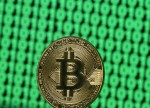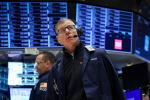
- All Instrument Types
- Indices
- Equities
- ETFs
- Funds
- Commodities
- Currencies
- Crypto
- Bonds
- Certificates
Please try another search

Poor U.S. Data Cast Doubts on New Found Hopes of a Soft-Landing

Yesterday's string of dismal US economic data delivered a material blow to those still thinking that a soft landing was possible. Retail sales dropped by the most in a year. Manufacturing output fell by nearly 2.5% in the last two months of 2022.
The honeymoon of the New Year may have ended yesterday. The US 10-year yield fell below 3.40% for the first time since the middle of last September. The Atlanta Fed's GDPNow tracker reduced its projection from 4.1% for Q4 22 to 3.5%, which is still higher than most economists' forecasts. Ironically, this comes as former Treasury Secretary Summers, a vocal Fed critic, conceded yesterday that a recession could ultimately be avoided, and the headline of the Financial Times yesterday was about the brighter outlook at the IMF.
The Chinese recovery meme helped regional equities resist the tug from the US sell-off, but Europe's Stoxx 600 is off 1.2%, the most since mid-December, giving back this week's gains and stopping the six-day advance. US futures point to the possibility of a gap lower opening today. Benchmark 10-year yield is a couple of basis points firmer in Europe, but the 10-year US Treasury yield is off slightly to dip below 3.36%. Demand worries weighed on the price of WTI yesterday and API reported a large jump in US stocks (7.6 mln barrel build), snapping the seven-day rally. February WTI peaked yesterday near $82.40 and fell to about $78.15 today before steadying.
Asia Pacific
There are two developments in Japan to note. First, the December trade deficit was smaller than expected. Japan's trade balance typically improves from November (16 of the past 20 years). The trade deficit fell to JPY1.45 trillion from JPY2.03 trillion in November. Exports slowed to 11.5% year-over-year from 20.0% but were a bit better than expected. Imports slowed to 20.6% from 30.3%, which was less than expected. Last year Japan's monthly trade deficit averaged JPY1.66 trillion, after JPY148.6 bln in 2021 and a surplus of JPY32.4 bln in 2020. Second, the weekly MOF figures show that Japanese investors were significant sellers of foreign bonds last week. They sold JPY3.9 trillion worth of foreign bonds. It was the fifth consecutive weekly sales. Only twice last year was the weekly divestment greater.
Australia's December employment data was stronger than the headline loss of 14.6k jobs suggests. There was an increase of 17.6k full-time positions after a revised 33.3k in November (initially 33.3k). The loss of jobs was limited to part-time employment. The unemployment rate was steady at 3.5% (November's rate was revised to 3.5% from 3.4%) even though the participation rate unexpectedly slipped to 66.6% from 66.8%. Separately, note that the January inflation expected (survey by the Melbourne Institute) rose to 5.6% from 5.2%.
The dollar has spent the Asian session and most of the European morning below where it settled in North America against the yen (~JPY128.90). The greenback also has held above yesterday's low near JPY127.55. The Australian dollar reversed lower yesterday and has continued to retreat today amid the risk-off environment. Today's low is slightly below $0.6880, which is about the middle of this month's range. It is still a little above last week's low (~$0.6860) and a break would target the $0.6830 area initially. After rising to $0.6530 yesterday, its best level since last June, the New Zealand dollar also stalled and has come back offered today, to approach Wednesday's low near $0.6370. The next area of support is seen at around $0.6340. The Kiwi was already under pressure before the unexpected resignation of Prime Minister Ardern. A new Labour Party leader will be chosen over the next few weeks and will lead the party into the mid-October election. The greenback edged higher against the Chinese yuan. It is the third advance this week. The dollar's reference rate was set at CNY6.7674, slightly lower than the median forecast in Bloomberg's survey (CNY6.7685). The PBOC has continued to add liquidity to the banking system ahead of next week's Lunar New Year holiday.
Europe
Switzerland's new finance minister Keller-Sutter indicated that it will reluctantly accept the global minimum tax rate of 15%, confirming what was already recognized. It is slated to begin next January. She warned that due to the "failsafe" clauses, if the host country does not impose the 15% minimum tax, then another country will (this is the so-called undertaxed profits rule). Last summer, the US congressional Joint Committee on Taxation estimated the 15% global minimum tax would generate an additional $318.7 bln in extra revenue over the next decade. While the White House and Treasury support the international tax agreement, the Senate last year failed to support the effort. There seems to the hope among some US officials that if the other countries continue planning to implement the minimum corporate tax (might apply to 40-50 US companies, according to some estimates), it will force congressional action. The companies subject to the minimum tax would still be paying it but not into US coffers. The loss of these revenues as the debt ceiling looms could eventually lead to some deal to implement the minimum corporate tax, but it looks unlikely.
There are two market metrics to gauge the tension in Europe. The first is the yield differential between Germany and Italy. The continues to show low-level anxiety. Italy's 10-year premium eased to 170 bp yesterday, the least in nine months. Italy's 2-year premium approached 25 bp, the lowest level since October 2021. On one hand, the Meloni government has not been as disruptive as investors feared. The two-year spread was near 132 bp and the 10-year differential was slightly above 250 bp in late Q3 22. That said, it is not unusual for the Italian premium over German to be sensitive to the direction of rates. When they decline, the Italian premium frequently does, and that has been the case. In a rising rate environment, like today, the premium typically increases. The other market metric is the Swiss franc-euro cross. That is signaling a more cautious note. At the end of last week, the euro traded at its best level against the Swiss franc (~CHF1.0098) since the middle of last year and moving above the 200-day moving average. After reversing lower before the weekend, the euro has tumbled to around CHF0.9875 and found support yesterday and today. Additional chart support is seen in the CHF0.9800-30 area.
As widely anticipated, Norway's central bank, Norges Bank, paused its tightening, with its key deposit rate at 2.75%. Still, the central bank was clear that another rate hike is March was "most likely." At the end of last year, Norges Bank indicated that the deposit rate would increase to around 3% this year. The krone pared is earlier losses. Indicative pricing suggests that many participants look for a 3.25% peak near mid-year.
The euro made a marginal new high since April yesterday a little shy of $1.0890 but came off to a four-day low near $1.0765 as the risk-off mood gathered momentum as US equities tumbled. The euro has steadied today and is straddling the $ 1.08 level. A break of the $1.0730 area is needed to signify anything important from a technical perspective. The recovery to new session highs in the European morning is stretching the intraday momentum indicators, warning of the risk of a pullback in early North American turnover. Sterling approached the mid-December high (~$1.2445) yesterday but stalled. It is in less than a half-cent range below $1.2350 today. If the $1.2300 area does not hold, the next support area is seen at around $1.2250.
America
It is difficult to imagine an uglier set of data for the US. Consumption (retail sales), output (industrial production), and prices (producer prices) were all weaker than expected. Not only did December retail sales fall by 1.1% (the median forecast in Bloomberg's survey envisioned a 0.9% decline) but the November series was revised to show a 1% loss instead of a 0.6% decline as an initial report. Industrial output contracted by 0.7% (the median forecast in Bloomberg's survey was for a 0.1% decline). And adding insult to injury November's 0.2% loss was revised to a 0.6% fall. Manufacturing production fell by 1.3% after a revised 1.1% drop in November (originally, a 0.6% decline). It is like the economy fell off a cliff, though the survey data has warned of these cracks. Headline producer prices tumbled by 0.5% in December, well more than the 0.1% economists had projected.
Economists likely shaved Q4 GDP forecasts on the back of the data. The first estimate is due next week. Expectations for the terminal Fed funds rate have eased a bit and now look to be in the middle of the 4.75%-5.0% range. The median Fed dot was a little above 5.0%. The implied yield of the December Fed funds futures implies not only one quarter-point cut before the end of the year, has about 30% of a second one discounted. The 2-year note yield slipped briefly below 4.07%. It has not been this low since October 10, when it last yielded less than 4%. The $12 bln 20-year bond auction was one of the best for this tenor. It was awarded at a yield nearly three basis points below where it was in the When-Issued market despite the nearly 10 bp decline before the auction deadline. The bid cover was an impressive 2.83 and dealers absorbed only 8.1%
So, the US debt ceiling is at hand, but really? In this repetitive macabre political dance, the US Treasury has a playbook that Secretary Yellen says could extend through Q2 without significant disruption. Recall that the ceiling limits the US's ability to pay for what is has already been authorized to spend. It is rather bizarre. In August 2011, in explaining its removal of the AAA rating of the United States several days after the debt ceiling was lifted, S&P explained "The political brinksmanship of recent months highlights what we see as America's governance and policymaking becoming less stable, less effective, and less predictable than what we previously believed. The statutory debt ceiling and the threat of default have become political bargaining chips in the debate over fiscal policy." Shortly after the downgrade, the US opened in a formal investigation in the S&P in rating several mortgage-backed securities that may have helped precipitate the Global Financial Crisis. Less than three weeks after the downgrade, the CEO of S&P stepped down.
The risk-off mood is taking a toll on the Canadian dollar. The greenback posted an outside up day against the Canadian dollar and recovered to CAD1.3500 after setting a three-day low near CAD1.3350. Follow-through buying today has lifted it to CAD1.3520. The CAD1.3540 area is the (61.8%) retracement of the US dollar's losses since the month's high was recorded on January 3 around CAD1.3685. The greenback posted a key upside reversal against the Mexican peso yesterday and there has been follow-through buying here as well.
Yesterday, the US dollar initially fell to its lowest level since March 2020 (~MXN18.5665) and reversed sharply higher, reaching MXN18.9025, a four-day high. It closed near its highs and has been bid to MXN18.9950 today in the European morning. We suspect this is the kind of pullback in the Mexican peso that may bring in new buyers, attracted to its high rates and relative political stability. The greenback also recovered smartly against the Brazilian real. It was mostly a risk-off story, but President Lula's questions about the importance of an independent central bank do not set right with investors who are concerned about the direction of the new government. A move above BRL5.2250 targets BRL5.2725 and maybe the BRL5.32 area.
Related Articles

We haven’t had to change our subjective probabilities for our three alternative economic scenarios for quite some time. We are doing so today and may have to do so more frequently...

The US, Japan, and parts of Europe had a rough week, while China, Germany, France, and the Euro Stoxx 50 stayed steady. Tariffs, central banks, and the war in Ukraine keep...

We haven’t discussed global monetary inflation for a while, mainly because very little was happening and what was happening was having minimal effect on asset prices or economic...
Are you sure you want to block %USER_NAME%?
By doing so, you and %USER_NAME% will not be able to see any of each other's Investing.com's posts.
%USER_NAME% was successfully added to your Block List
Since you’ve just unblocked this person, you must wait 48 hours before renewing the block.
I feel that this comment is:
Thank You!
Your report has been sent to our moderators for review





Add a Comment
We encourage you to use comments to engage with other users, share your perspective and ask questions of authors and each other. However, in order to maintain the high level of discourse we’ve all come to value and expect, please keep the following criteria in mind:
Enrich the conversation, don’t trash it.
Stay focused and on track. Only post material that’s relevant to the topic being discussed.
Be respectful. Even negative opinions can be framed positively and diplomatically. Avoid profanity, slander or personal attacks directed at an author or another user. Racism, sexism and other forms of discrimination will not be tolerated.
Perpetrators of spam or abuse will be deleted from the site and prohibited from future registration at Investing.com’s discretion.